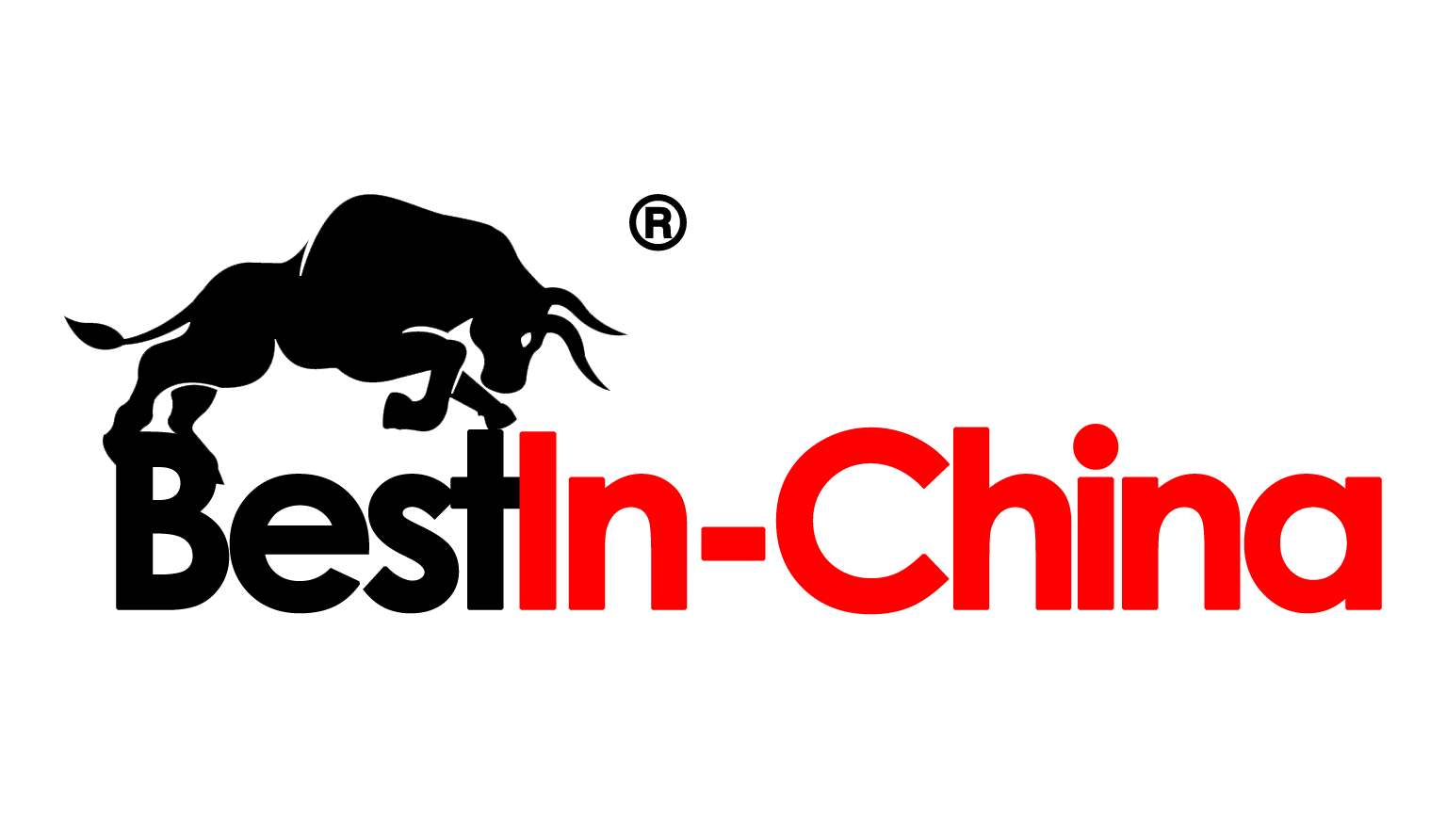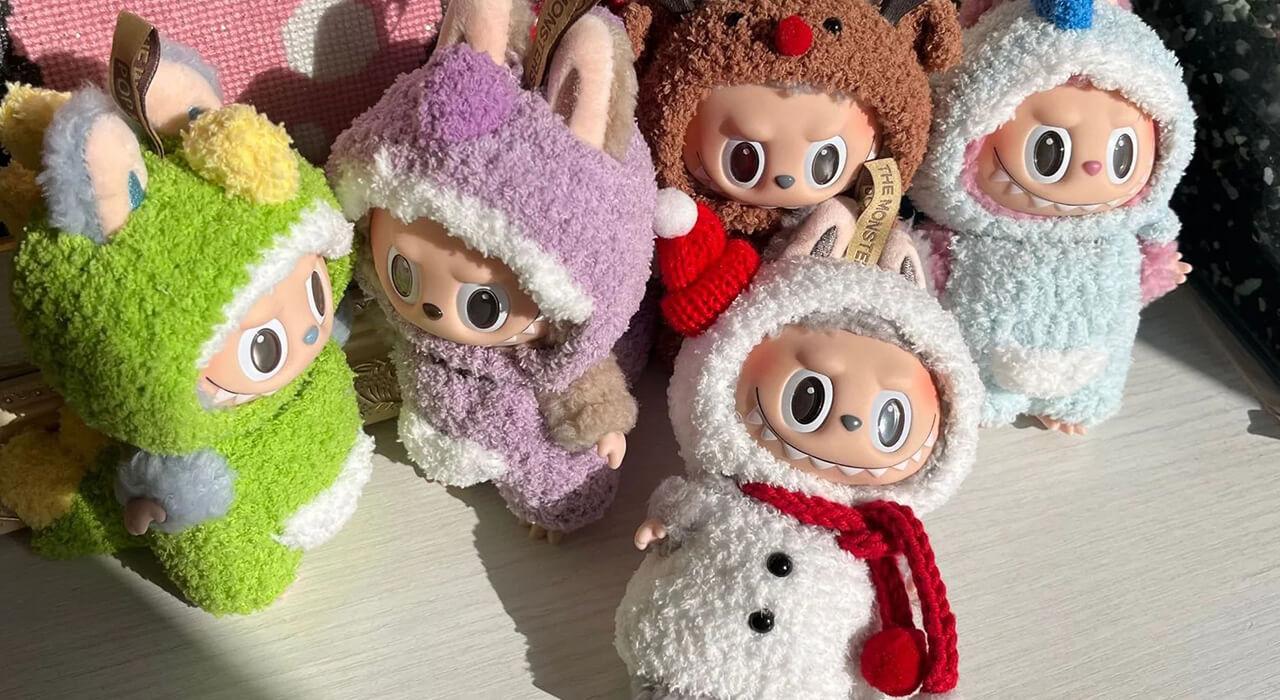Labubu plushies are trending worldwide. It can make your wholesale catalog stand out by adding Labubu-themed apparel.
The Labubu phenomenon – a cute but slightly devilish character from Hong Kong designer Kasing Lung – is fueling a global craze. Vogue reports that Labubu hype is at an unprecedented high. You see Labubu charms and logos everywhere on street fashion, and even celebrities like Rihanna and Blackpink’s Lisa have flaunted it.
For wholesalers and boutique owners, Labubu Clothes tap into this buzz: garments or doll outfits featuring Labubu’s pastel-infused Nordic-folk style (per Vogue’s description). These quirky, “cute-meets-ugly” designs have mass appeal, creating a lucrative niche product.
Since demand is surging thanks to social media and influencer exposure, stocking Labubu Clothes can boost your sales and brand image.
For more on trending imports and sourcing, see our China Wholesale Sourcing Guide and Apparel Sourcing Checklist.

Do You Have Any Questions?
1. Why Source from China

China is famously the world’s factory, especially for textiles and apparel.
Its manufacturing sector is massive – in 2023 China’s manufacturing value-added was $4.66 trillion (29% of the world’s total) – and the garment industry alone accounts for a huge share of global exports.
This scale delivers huge advantages for B2B buyers:
Cost Efficiency: Chinese factories leverage affordable labor and enormous economies of scale. That means lower unit costs on Labubu clothes than almost anywhere else. For example, Alibaba lets you buy directly from factories at much lower prices than Alibaba.com. In short, you can dramatically improve your profit margins by sourcing in China.
Variety & Customization: China’s supply chain is highly developed. You can find a wide array of fabrics and styles, or even get custom designs made. Platforms like Made-in-China give access to countless factories. Made-in-China offers a wider variety of products at lower price and providing businesses with access to a vast range of products directly from manufacturers.
Speed & Scalability: With thousands of clothing factories, China can handle both small and huge orders. Many suppliers can scale up quickly if your demand grows. Advanced logistics infrastructure (ports, rail, air cargo) also speeds up production and delivery. In practice, lead times are often as fast as 2–6 weeks for bulk clothing orders (source: China apparel guides) and can often ship quickly once production is done.
China’s manufacturing dominance is proven. Beyond sheer volume (29% of global manufacturing output), Chinese producers have honed quality control and efficiency over decades.
All this makes China the go-to sourcing hub for budget-conscious yet quality-seeking importers. As a result, countless wholesalers import everything from basics to “hot trend” items like Labubu Outfits from China.
2. Recommended Suppliers & Platforms
When sourcing Labubu clothes, consider both online marketplaces and direct approaches. Popular and trusted channels include:
Alibaba.com (Global): The world’s largest B2B platform connects you to millions of vetted suppliers. Many clothing manufacturers list their products here. Alibaba’s Verified Supplier program (backed by SGS/Intertek audits) offers extra trust. You can negotiate MOQ and pricing directly.

- 1688.com (Chinese domestic market): Essentially Alibaba’s Chinese cousin, 1688 allows you to buy even cheaper (sometimes 30–50% less) because it’s aimed at local businesses.
Each source has its own strength. For example, Alibaba/1688 gives you direct factory access, while Global Sources is safer but pricier. Bestin-China can be useful for niche fashion items. Using a sourcing agent bridges language and vetting gapssupplyia.com. Whichever you choose, always compare multiple options. Our China Sourcing Guide offers further links to top B2B platforms.
Supplier Comparison at a Glance
| Platform/Supplier | MOQ (pieces) | Price Range / Unit | Key Features | Comments |
|---|---|---|---|---|
| Alibaba.com | ~100 (negotiable) | Moderate-High | Huge supplier base, Trade Assurance, Verified Supplier | Many suppliers, quality varies; use Verified tag for reliability. |
| 1688.com | As low as 10 | Low (cheapest) | Direct factories, domestic market pricing | Very low cost; site in Chinese, often requires agent to navigate. |
| Made-in-China.com | ~100-500 | Moderate | Audited factories, diverse products | Secure payment system; more industrial focus. |
| Global Sources | 100+ | Moderate-High | Verified vendors, trade show network | High quality focus, smaller selection. |
| DHgate.com | 1+ | Low-Moderate | No MOQ, buyer-protection program | Good for samples, but quality control needed. |
| Bestin-China.com | 50+ | Moderate | Fashion-oriented suppliers, English interface | Curated apparel focus, smaller scale. |
| Sourcing Agent | 1+ (flexible) | Variable (service fee) | Personalized matching, QA | Helps navigate language & verification. Agent adds ~5–10% fee. |

Do You Have Any Questions?
3. How to Evaluate a Supplier
Choosing a reliable clothing supplier is crucial. Use these criteria to vet potential partners:

Quality & Certifications: Check if the supplier has quality management systems (e.g. ISO 9001) and product certifications (OEKO-TEX, etc.). Companies with formal quality certifications or factory audits give more assurance. On Alibaba, look for the “Verified Supplier” badge: Alibaba verifies these suppliers via third-party audits (SGS/Intertek) of factories, documents and processes.

Production Capacity: Ensure the factory can meet your order size and deadline. Ask about their monthly output and whether they’ve handled orders your size. A good supplier should comfortably meet or exceed your volume and have backup capacity.
Track Record & Experience: Review the supplier’s history. Have they produced similar clothing lines? Ask for references or existing customer contacts. Check online reviews or B2B feedback. A seasoned supplier is likely more stable.
MOQ & Pricing Structure: Confirm the minimum order quantity and how price scales with volume. Does the MOQ fit your needs (some factories want 200+ pieces per style)? Ask if they can do smaller runs or mixed styles. Also clarify pricing tiers (bulk discounts for larger quantities)sourcifychina.com.
Sample Policy: A transparent supplier will readily provide a pre-production sample for approval. They should discuss sample costs and lead times upfront.
Communication & Language: Test their responsiveness. Clear, prompt communication is a must. Language barriers can cause errors, so consider suppliers with English-speaking staff or use a sourcing agent to help.
Payment & Terms: Verify secure payment terms (trade assurance, escrow, LC)winskyfreight.com. Avoid suppliers insisting on full prepayment or obscure payment methods.
Factory Visit / Audit: When possible, visit the factory or hire an inspector. Seeing facilities first-hand (or via videos) can reveal working conditions and professionalism.
Selecting the right supplier means balancing cost with reliability. As ASQ notes, good selection criteria include the supplier’s quality systems (ISO), capacity, and track record. Do not choose a supplier solely on lowest price. The most reliable apparel supplier will meet specs and deliver on time.
4. Step-by-Step Import Process

Importing Labubu clothes involves several coordinated steps:
Find Suppliers: Search multiple channels. Use online B2B sites (Alibaba etc.) to locate vendors selling Labubu apparel. Also consider trade shows (virtually or in-person) and referrals. Industry guides recommend looking online and offline: for example, check expos, trade associations, and even competitor leads. Compile a shortlist of 3–5 candidates.
Contact & Negotiate: Reach out with a clear inquiry. Provide product details (Labubu design, fabric, sizes, colors). Ask for quotes including MOQ and lead time. Negotiate pricing and terms. Don’t fixate on just the lowest price – aim for a “win-win” deal that balances cost and quality. For instance, mention your order volume and ask for discounts on larger quantitiessourcifychina.com. Also discuss packaging, labeling, and payment methods.
Order Samples: Before full production, request samples. Always test the sample for quality – it should match the agreed specifications. Skipping this is a common mistakewinskyfreight.com. Inspect materials, stitching, fit, and Labubu print/embroidery. Provide feedback and get approval before proceeding.

- Place Bulk Order: Once satisfied, sign a purchase agreement or proforma invoice. The contract should specify all details – design specs, materials, colors, sizes, order quantity, quality standards, delivery date, payment terms, and penalties for defects or delay. Follow best practice: pay a moderate deposit (around 30–50%) via a secure channel (Alibaba Trade Assurance, bank transfer, or letter of credit) and the balance upon shipment. Never wire full payment in advance.
Quality Assurance: Monitor the production. You can request progress photos or video, but ideally hire a third-party inspector to audit the goods pre-shipment. An inspection service will check the clothing (colors, measurements, construction), count quantities, and review packaging. This extra step helps catch issues early. If any defects arise, work with the supplier to correct them before finalizing the shipment.
Shipping: Decide on shipping terms and incoterms (e.g. FOB, CIF). Arrange transport – sea freight for large orders, air freight for time-sensitive smaller shipments. Experts note that sea freight is cheapest (around $0.5/kg) but slow (4–8 weeks), while air freight is 4–10× more expensive but fast (1–2 weeks)winskyfreight.comwinskyfreight.com. Balance cost vs. urgency. Always insure your cargo. For door-to-door ease, consider using a freight forwarder or shipping agent to handle logistics and documentation.
Customs Clearance: Prepare required documents: commercial invoice (with Labubu goods description), packing list, bill of lading/air waybill, and any certificates (origin, compliance). Classify the garments under the correct HS code for apparel to calculate duties. Pay import duties and VAT as required by your country’s customs. Partnering with an experienced customs broker can smooth this process.
Receive & Inspect: When the goods arrive, inspect the shipment immediately. Verify quantities and quality against the contract. If any problems are found, document them and communicate with the supplier to resolve issues (e.g. arranging a return or discount).
Each step requires clear communication and documentation. For more details, check our Import Checklist.

Do You Have Any Questions?
5. Pricing and MOQ Explained

Wholesale clothing prices vary widely by material and volume. Generally, expect higher unit costs at low quantities. For example, a custom Labubu T-shirt might cost $8–$12 each at an MOQ of 50–100 units, but fall to $5–$7 at 500+ units. Pricing tiers are common: suppliers often quote one price for the first MOQ threshold and a lower price for larger quantities.
The table below illustrates a hypothetical pricing scale for Labubu apparel (for discussion):
| Order Quantity | Unit Price (USD) | Effective Discount |
|---|---|---|
| 50 – 99 pcs | $10 – $12 | Base price |
| 100 – 499 pcs | $8 – $10 | ~15-25% off |
| 500 – 999 pcs | $6 – $8 | ~35-45% off |
| 1000+ pcs | $4 – $6 | ~50% off or more |
Table: Example Labubu clothing pricing by order volume (illustrative only).
Key points on pricing/MOQs:
MOQ: Many garment factories set MOQs around 50–200 pieces per style/color. Novelty items like Labubu outfits might have higher MOQs if they require custom prints. Always confirm the MOQ before committing.
Bulk Discounts: As the table suggests, per-unit costs drop significantly as you buy moresourcifychina.com. Savvy buyers negotiate these breaks. If your initial MOQ quote is high, try requesting a mixed-item order or partial MOQ to test the market, then scale up once you’ve sold some.
Hidden Costs: Remember to factor in sample charges (some suppliers charge the full price for your first sample) and shipping costs. Also budget for customs duties (often 10–20% for apparel) and any middlemen fees. These can add $1–$3 per item to your landed cost.
Payment Terms: Lower prices often require larger upfront payment or irrevocable L/C. Secure methods (Alibaba Trade Assurance, Escrow, etc.) may allow safer payments with slightly higher fees. Always clarify terms early.
Negotiate holistically, not just price: consider quality, lead-time, and guarantees. One sourcing guide advises aiming for a win-win deal, not just the lowest price. For instance, if you commit to a larger annual volume, ask for extra discount or better packaging included.
6. Tips for First-Time Importers

Importing from China has pitfalls, especially for newcomers. Keep these best practices in mind:
Research Thoroughly: Know the Labubu market and compare supplier quotes. Investigate a supplier’s background, reviews, and track record. One export guide emphasizes verifying suppliers via reviews, referrals, and trade histories before negotiating. A quick web search or inquiry to other buyers can reveal if they’re reputable.
Sample Everything: Never skip sample testing. Even if the price and website look great, the product might not meet expectations. Always order a pre-production sample to check fit, print quality, and fabric feel. Only proceed when you’re 100% satisfied.
Secure Payments: Use trusted payment methods (Alibaba Trade Assurance, PayPal, bank transfer) and avoid unusual requests. Never pay more than about 30–50% upfrontwinskyfreight.com. A common mistake is overpaying suppliers – cap your deposit and ensure part payment is due on proof of shipment.
Beware the Lowest Price: As a rule of thumb, extremely low quotes often signal inferior quality. The experts warn: “Sellers who offer low prices may not always be the best [choice], because they might compromise on quality”. Target a moderate, competitive price instead of the rock-bottom bid.
Communicate Clearly: Spell out every detail – materials, dimensions, colors, labels, packaging – in writing. C2W advises that clear requirements upfront “avoid misunderstandings” later. Use diagrams or tech packs if possible. Also, schedule regular check-ins during production.
Inspect or Hire Inspections: For your first large order, consider a factory or third-party quality check. A local agent or inspection firm can visit the factory when the order is complete and catch issues (defects, short shipment) before loading the cargo.
Watch for Red Flags: Lack of business license, only personal email contact, refusal to show a sample, or a supplier pressuring full payment are warning signs. Protect yourself legally: draft a contract and insist on safe terms.
Plan for Delays: Chinese New Year and national holidays can halt production for weeks. Don’t place urgent orders around late January-February without accounting for downtime.
Build Relationships: Even as a first-timer, be polite and patient. Address your suppliers respectfully, and they’ll be more willing to work with you.
By following these practices, first-time importers can avoid common mistakes. For a deeper dive, check our Import Tips & Mistakes article.

Do You Have Any Questions?
7. Building a Long-Term Partnership
Winning Chinese suppliers’ loyalty can unlock better prices and service. In China, business often hinges on guanxi – personal relationships and trust. As one trade expert notes, Chinese partners prefer to establish relationships before big dealsmgtrading.com. Here’s how to nurture a lasting partnership:
Cultural Respect & Communication: Cultivate open, respectful dialogue. Learn a few basic Chinese business etiquettes (e.g. courteous greetings, accepting business cards properly). The Global Trade Specialists guide emphasizes that “clear and effective communication is essential” and that all specs (tolerances, responsibilities) should be agreed on upfront. Misunderstandings happen easily, so double-check and confirm everything.
Face-to-Face (if Possible): Visiting factories builds trust like nothing else. Many Chinese suppliers value banquets and site visits as a way to honor you. If you can’t go personally, consider an agent meeting on your behalf.
Fair Negotiation: Always honor agreements and deliver on promises. Pay invoices on time and show respect for the supplier’s efforts. When discussing terms, aim for mutual benefit. One sourcing guide recommends framing negotiations as win-win, balancing cost with qualitychina2west.com.
Patience and Trust: Strong relationships take time. MG Trading notes that success requires “patience, cultural understanding, and a commitment to mutual success”mgtrading.com. A friendly gesture or festival gift can go a long way in China’s relational culture.
Transparency: Be honest about your sales projections and feedback. Share your growth plans; suppliers appreciate long-term forecasts. Suppliers who feel you’re a reliable, ongoing partner will often give priority service and even innovation ideas.
Quality Consistency: Maintaining consistent orders and quality feedback reassures suppliers to invest in you. If something goes wrong, work together to fix it calmly. This cooperative spirit cements the bond.
Leverage Network: Once trust is built, you can ask your supplier for references to other verified vendors or better deals. A good supplier will reciprocate by referring you to exclusive products or factories.
In short, treat the relationship like any valuable asset. As industry experts summarize: success with Chinese suppliers relies on “cultivating trust, investing in face-to-face interactions, maintaining clear and open communication, and focusing on win-win partnerships”mgtrading.com. Over time, this guanxi will smooth your sourcing and could even lead to exclusive designs or better prices.
8. To Sum Up
Ready to source Labubu clothes? Start by exploring listings on trusted platforms (for example, Bestin-China or Alibaba) and reaching out for quotes.
Our team is also here to help: contact us for personalized supplier matching or check our Further Sourcing Resources. Don’t miss the Labubu trend – with China’s cost advantages and your diligence, you’ll be well-positioned to tap into this stylish market!



